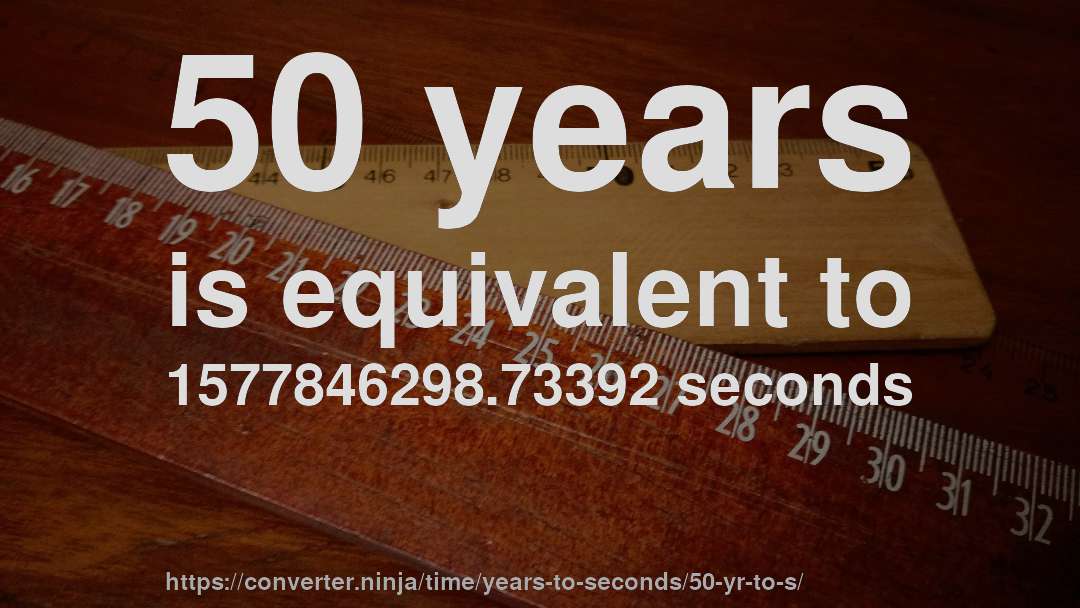
50 years is equivalent to 1577846298.73392 seconds.
We know (by definition) that: 1 yr = 31556926 sec
We can set up a proportion to solve for the number of seconds.
1 yr 50 yr = 31556926 sec x secNow, we cross multiply to solve for our unknown x:
x sec = 50 yr 1 yr * 31556926 sec → x sec = 1577846300 secConclusion: 50 yr = 1577846300 sec
The inverse of the conversion factor is that 1 second is equal to 6.33775292816804e-10 times 50 years.
It can also be expressed as: 50 years is equal to 1 6.33775292816804e-10 seconds.
Approximation
An approximate numerical result would be: fifty years is about one billion, five hundred and seventy-seven million, eight hundred and forty-six thousand, two hundred and ninety-eight point seven three seconds, or alternatively, a second is about zero times fifty years.
Units involved
This is how the units in this conversion are defined:
Years
"A year is the orbital in which Earth moves in its orbit around the Sun. Due to the Earth's axial tilt, the course of a year sees the passing of the seasons, marked by changes in weather, the hours of daylight, and, consequently, vegetation and soil fertility. In temperate and subpolar regions around the globe, four seasons are generally recognized: spring, summer, autumn and winter. In tropical and subtropical regions several geographical sectors do not present defined seasons; but in the seasonal tropics, the annual wet and dry seasons are recognized and tracked."
Seconds
"The second (symbol s) is the base unit of time in the International System of Units. It is qualitatively defined as the second division of the hour by sixty, the first division by sixty being the minute.[3] SI definition of second is the duration of 9 192 631 770 periods of the radiation corresponding to the transition between the two hyperfine levels of the ground state of the caesium 133 atom. Seconds may be measured using a mechanical, electrical or an atomic clock. SI prefixes are combined with the word second to denote subdivisions of the second, e.g., the millisecond (one thousandth of a second), the microsecond (one millionth of a second), and the nanosecond (one billionth of a second). Though SI prefixes may also be used to form multiples of the second such as kilosecond (one thousand seconds), such units are rarely used in practice. The more common larger non-SI units of time are not formed by powers of ten; instead, the second is multiplied by 60 to form a minute, which is multiplied by 60 to form an hour, which is multiplied by 24 to form a day. The second is also the base unit of time in other systems of measurement the centimetre–gram–second, metre–kilogram–second, metre–tonne–second, and foot–pound–second systems of units."
[1] The precision is 15 significant digits (fourteen digits to the right of the decimal point).
Results may contain small errors due to the use of floating point arithmetic.ncG1vNJzZmibn6PDpr7Tnqlnppmjt6J706Kknmepmq6zv4ytpmarlZi8r7DSaGxpZamnerW7jKxm